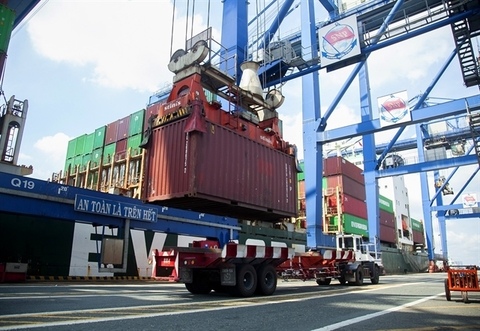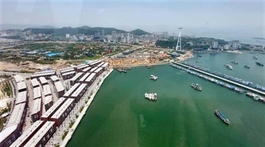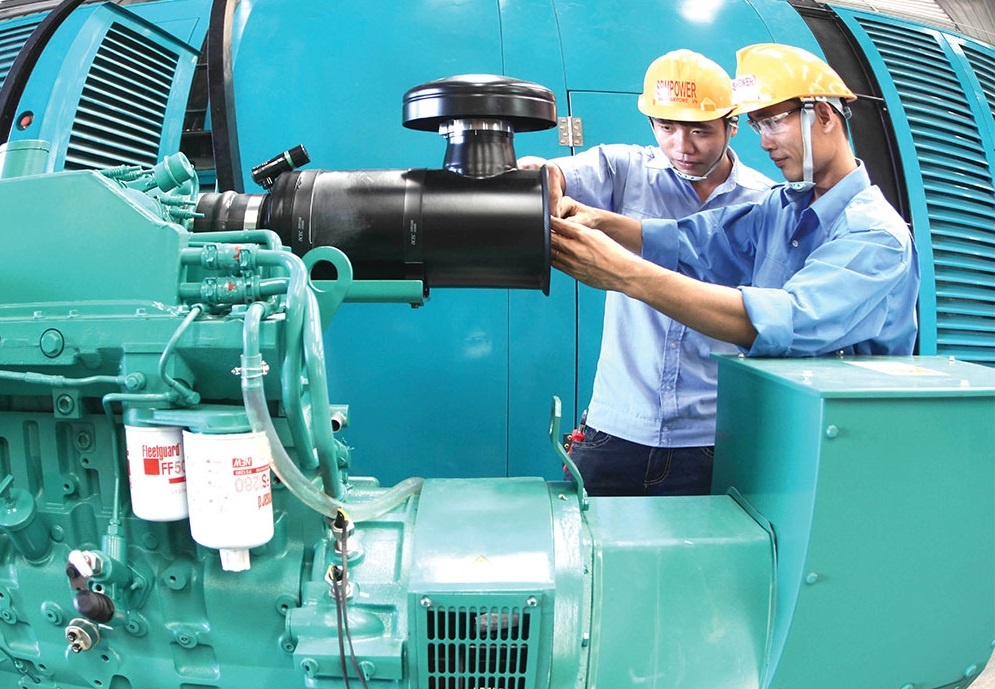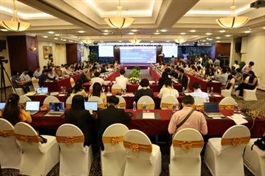Three scenarios put forward for national economy in 2023
Three scenarios put forward for national economy in 2023
Viet Nam’s gross domestic product (GDP) is expected to grow 5.34 per cent this year under the first scenario set out by the Central Institute for Economic Management (CIEM).

Containers loaded at Tan Cang - Cat Lai Terminal. Economic growth has seen improvements between quarters, with 3.28 per cent in the first and 4.14 per cent in the second. — VNA/VNS Photo Hong Dat |
The institute announced a report on the domestic economy in the first half of this year, and prospects for the second at a workshop in Ha Noi on July 10, where its three scenarios on the national economy were made public.
The first assumes global economic development matches assessments of international organisations and Viet Nam, under which the country’s export is projected to slide 5.64 per cent, and its consumer price index (CPI) will rise 3.43 per cent, with a trade surplus of US$9.1 billion.
Under the second, given monetary and fiscal easing in Viet Nam the GDP growth is set at 5.72 per cent, export is expected to decrease by 3.66 per cent, and the CPI is forecast to expand 3.87 per cent, with a trade surplus of $10.3 billion.
In the last scenario where the global economy sees positive changes, and Viet Nam will take drastic actions in reform and management, GDP is hoped to grow 6.46 per cent, exports will drop only 2.17 per cent, the CPI will go up 4.39 per cent and the trade surplus will stand at $6.8 billion.
According to the institute’s report, the first six months have given Viet Nam an idea of socio-economic requirements for the second half as well as the coming years.
Head of the CIEM's General Research Department Nguyen Anh Duong called difficulties in the first two quarters “positive pressure” for the Government, ministries, agencies and localities to take more drastic actions in management and reform in the time ahead.
CIEM Director Tran Thi Hong Minh said since the beginning of this year, the Government has paid attention to perfecting institutions and policies, tapping investment resources for the national economy, and improving the business environment.
Despite the gap with the set target, economic growth has seen improvements between quarters, with 3.28 per cent in the first and 4.14 per cent in the second, she said, adding that the growth in the first half of this year reached 3.72 per cent.
In the six months, the total social investment exceeded VND1.35 quadrillion ($57.05 billion), up 4.7 per cent year-on-year.
As of June 30, the disbursement rate of public investment reached 30.5 per cent of the target assigned by the Prime Minister, higher than the 27.7 per cent recorded in the same period last year.
The country also attracted $13.43 billion in foreign direct investment (FDI), down 4.35 per cent, while FDI disbursement went up 0.5 per cent.
The total export value in the reviewed period was estimated at $164.5 billion, down 12.1 per cent, and import was $152.2 billion, down 18.2 per cent, resulting in a trade surplus of over $12.2 billion.
Standard Chartered Bank in its recent report predicted that Viet Nam’s economy would continue recovery and expand at 7 per cent in the latter part of the year on sustained improvements in trade data.
Tim Leelahaphan, an economist at Standard Chartered Bank covering Thailand and Viet Nam, noted that Viet Nam's economic openness and stability were key factors supporting the country's promising medium-term outlook, adding that a continued recovery of tourist arrivals will help strengthen the services balance.
The bank also emphasised that sustained investment inflows may require an improved global backdrop and government efforts.




















